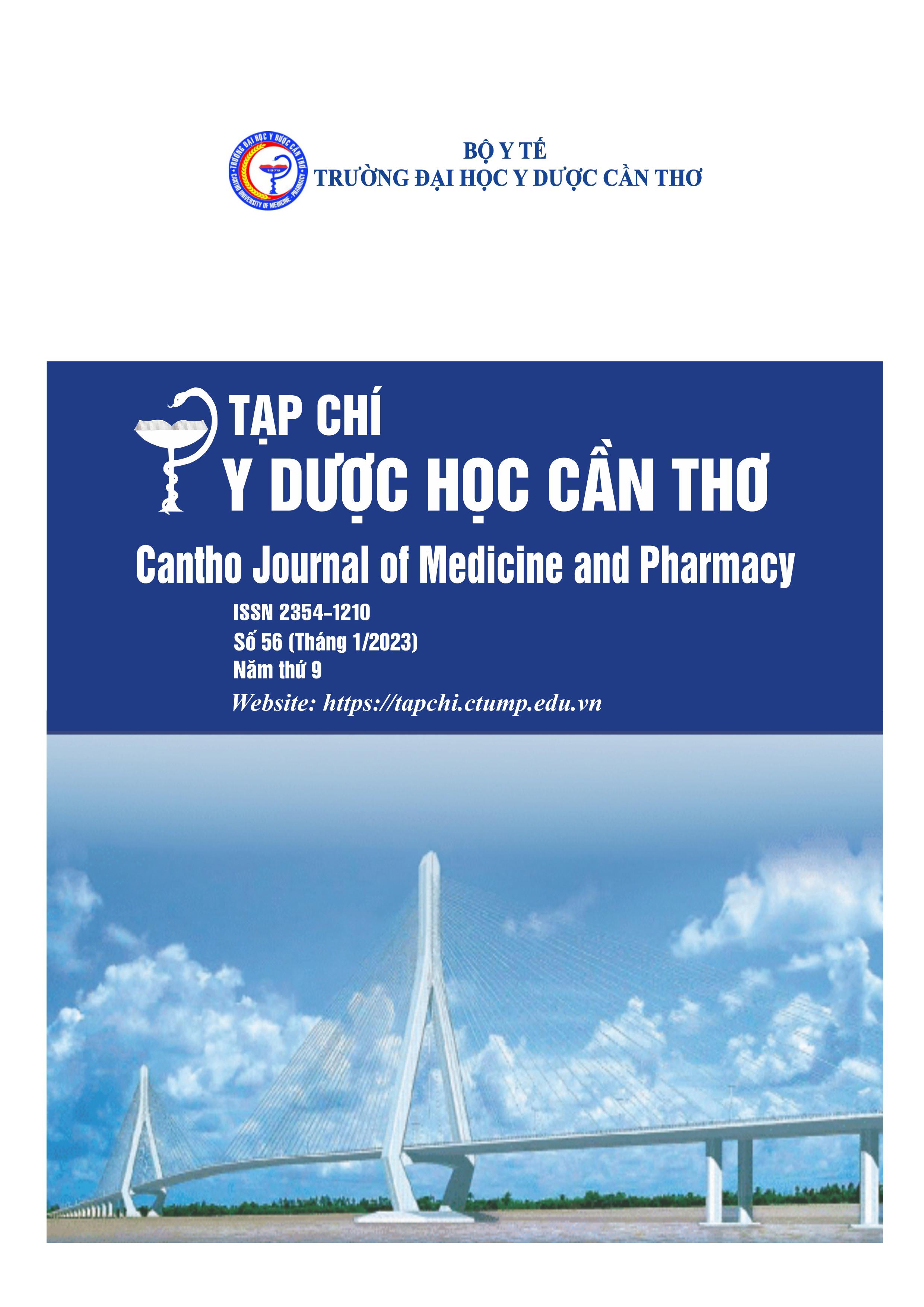EVALUATING THE TREATMENT RESULTS OF COVID-19 PATIENTS AT CAN THO TUBERCULOSIS AND LUNG DISEASES HOSPITAL IN 2021
Main Article Content
Abstract
Background: Patients infected with SARS-CoV-2 have a clinical symptomps that vary from flu-like symptoms to more severe clinical conditions such as respiratory failure, making diagnosis and treatment difficult. Objective: Evaluation of treatment results and determining of some factors related to the treatment outcomes of COVID-19 patients at the Hospital for Tuberculosis and Lung Diseases in 2021. Materials and Method: Retrospective study on 310 medical records of COVID19 patients at Can Tho Tuberculosis and Lung diseases Hospital. All data was collected by questionaires. SPSS 20.0 software was used for analyzing data. Results: There was 92.3% of patients discharged from the hospital. 1.9% of patients with more severe illnesses needed to be transferred to higher-level hospitals. 5.8% of patients died. Some factors related to results of treatment outcome were: Patients without underlying disease (OR=9.5); The patient breathes oxygen (OR=114.04); Abnormal white blood cells (OR=8.1); Increase AST (OR=2.8); Increase ALT (OR=3,1); Abnormal blood urea (OR=5.9); Abnormal creatinine (OR=4.6); Decreased blood pH (OR=50.5) and increased blood pH (OR=15.8); Increase D-Dimer (OR=61.3); Using Remdesivir >5-10 days (OR=5.3). Conclusion: It is necessary to pay attention to the clinical signs of severe transition of the patient and the subclinical results for prompt and timely intervention.
Article Details
Keywords
COVID-19, COVID-19 patient hospitalized, clinical symptoms
References
2. Đặng Phúc Đức và cộng sự (2022), “Ứng dụng tiêu chuẩn phân loại mức độ COVID-19 của Bộ Y tế năm 2022 trong tiên lượng nguy cơ tử vong”, Tạp chí Y dược học quân sự, 6, tr. 70-77.
3. Trần Văn Giang (2021), “Đặc điểm lâm sàng, cận lâm sàng bệnh nhân viêm phổi do COVID-19 điều trị tại Bệnh viện Nhiệt đới Trung ương”, Tạp chí Y học Việt Nam, 509 (1), tr. 348-351.
4. Đoàn Lê Minh Hạnh và cộng sự (2022), “Đặc điểm lâm sàng, cận lâm sàng bệnh nhân COVID19 nhập viện”, Tạp chí Y học Việt Nam, 517 (1), tr. 5-10.
5. Thân Mạnh Hùng và cộng sự (2021), “Lâm sàng, cận lâm sàng bệnh nhân COVID-19 và Sốt rét tại Bệnh viện Nhiệt đới Trung ương”, Tạp chí Y học Việt Nam, 506 (1), tr. 93-97.
6. Hoàng Thị Lan Hương và cộng sự (2022), “Đặc điểm lâm sàng và các dấu ấn sinh học tiên lượng của bệnh nhân Covid-19”, Tạp chí Y học lâm sàng, 79, tr. 27-34.
7. Nguyễn Hữu Huyên (2022), “Một số đặc điểm của bệnh nhân COVID-19 tử vong từ tháng 412/2021 tại tỉnh Đắk Lắk”, Trường Đại học Tây Nguyên, 52.
8. Nguyễn Thành Luân (2022), “Đánh giá đặc điểm và diễn biến một số xét nghiệm của bệnh nhân Covid-19 có tổn thương tại Bệnh viện Dã chiến số 2-Đại học Kỹ thuật Y tế Hải Dương”, Tạp chí Y học Việt Nam, 517 (1), tr. 22-27.
9. Hoàng Văn Sỹ (2021), “Đặc điểm lâm sàng và mức độ nặng của tổn thương phổi trên XQuang ngực ở bệnh nhân nhập viện do COVID-19”, Tạp chí Y học Việt Nam, 508 (1), tr. 315-320.
10. Christoph D. Spinner, et al. (2020), “Effect of Remdesivir vs Standard Care on Clinical Status at 11 Days in Patients With Moderate COVID-19 A Randomized Clinical Trial”, JAMA, 324 (11), pp. 1048-1057.
11. Marco Cascella, et al. (2022), Features, Evaluation, and Treatment of Coronavirus (COVID19), StatPearls Publishing.
12. 12. Martin Kieninger, et al. (2021), “Lower blood pH as a strong prognostic factor for fatal outcomes in critically ill COVID-19 patients at an intensive care unit: A multivariable analysis”, Plos one, 16 (9), pp. 1-15.


